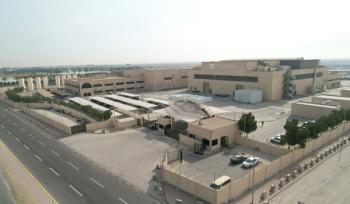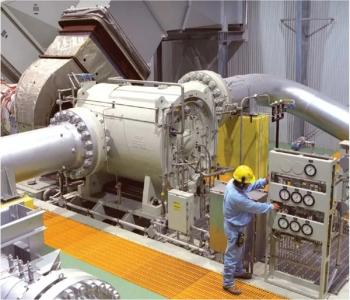
WHEN IS 60% EFFICIENCY NOT 60% EFFICIENCY?
Combined cycle gas turbine power plants are currently the most efficient way to convert fossil fuels into electricity. For many years, the Holy Grail of power generation was to reach, and exceed, 60% thermal efficiency at the generator terminals.
The path to this accomplishment involved significantly improved gas turbine efficiency, ever higher combustor firing temperatures, state-of-the-art steam cycles and modern hydrogen-cooled generators. Bragging rights go to manufacturers who can beat the 60% efficiency barrier.
All combined cycle plants combine a gas turbine (Brayton) cycle with a steam (Rankine) cycle by using the relatively high exhaust heat from the gas turbine to generate steam. While the gas turbine cycle is an open combustion cycle, using air as the working fluid, the steam cycle is a closed water cycle using the exhaust from the gas turbine as the heat source.
Therefore, the steam turbine can expand the steam to pressures well below the atmospheric pressure (vacuum pressure). The vacuum pressure is directly related to the condenser temperature, which in turn depends on the cooling medium used. If it is water, relatively low temperatures and pressures can be achieved using evaporative cooling or even chillers, while for air-cooled condensers, the ambient conditions imposes a limitation on the lowest cycle temperature.
This obviously impacts the output power of the steam turbine and thus the combined cycle plant efficiency as a whole. Lately, there is some confusion about reporting the capabilities of different configurations of different manufacturers.
Let’s take a step back and look at the salient points of efficiency definitions: ISO 3977 (Gas turbines — procurement) specifies the design parameters for standard conditions. These are, for the gas turbine, 15°C, 60% relative humidity, and ambient pressure of 101.3 kPa (14.7 psia). From an energy accounting standpoint, it is important to define whether the net or gross plant output is referenced.
All power plants also use significant parasitic energy to drive fans, pumps, fuel compressors and other devices, which all have their own varying efficiencies. Thus, the net output is the power at the generator terminals reduced by the plant power consumption mentioned before. This parasitic power cannot be neglected in a total plant efficiency comparison.
Efficiency definitions also have to consider whether the higher or lower heating value of the fuel is being used. Especially with natural gas, which contains a large amount of hydrogen atoms, and thus produces significant amounts of water in combustion products, the difference can be on the order of 5%, depending on the fuel.
To compare cycles, it generally makes sense to use the lower heating value, because the gas turbine exhaust stack temperature is usually kept high enough to avoid the formation of liquid water. Unfortunately all natural gas is sold on the basis of higher heating value so it is easy to create confusion.
One of the more controversial discussions is what vacuum pressure can be assumed for the steam cycle. The vacuum that can be achieved is directly related to the temperature of the cooling medium (water or air) in the condenser. The lower the vacuum pressure, the more pressure ratio is available for the steam turbine. Therefore, for the same steam conditions at the steam turbine inlet, the lower the vacuum pressure, the more power is generated by the steam turbine. This, in turn, increases the overall plant efficiency.
Again, ISO 3977 defines the reference standard, to be 4.5kPa and a cooling water temperature of 15°C for water-cooled, and 16.6kPa for air-cooled applications, assuming 15°C air temperature and 60% relative humidity. A combined cycle based on 2kPa vacuum pressure can add almost 0.5% points to the overall efficiency.
The Turbomachinery International Handbook, showing the ratings and specifications for available combined cycle plants reflects this dilemma. Ratings are provided by OEMs, some for gross output, some for net output, and for a variety of condenser pressures.
Clearly, when purchasing or comparing combined cycle power plants, it is critically important to perform a careful analysis of what efficiencies definitions are based on. If everything else fails it is often easiest to simply compare net fuel flow for a given plant output power and site condition.
We welcome your opinion and input on this interesting and important topic and will make every attempt to respond to your letters.
Authors:
Klaus Brun is the Machinery Program Director at Southwest Research Institute in San Antonio, Texas. He is also the past Chair of the Board of Directors of the ASME International Gas Turbine Institute and the IGTI Oil & Gas applications committee.
Rainer Kurz is the manager of systems analysis for Solar Turbines Incorporated in San Diego, CA. He is an ASME Fellow since 2003 and past chair of the IGTI Oil & Gas applications committee
Newsletter
Power your knowledge with the latest in turbine technology, engineering advances, and energy solutions—subscribe to Turbomachinery International today.




